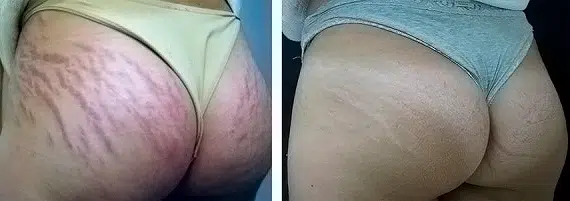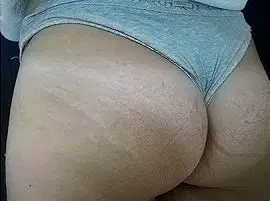Skin types and stretch marks treatment
This post will discuss the Relation Between Skin Type and Stretch Marks Treatment. Removing stretch marks on skin types 1 to 3 is easier than on darker skin types.
Stretch Marks On Light Skin
In light and medium skin tones, red stretch marks are more common. Stretch marks of this sort arise when the skin is injured, and little blood vessels form as a natural part of the healing process. By using our Vbeam pulsed dye laser or Sciton BBL, we can reduce the redness caused by tiny blood vessels.
Stretch Marks On Dark skin
The darker the skin, the greater the likelihood of “hyperpigmentation” and, consequently, the darker the stretch marks. Hyperpigmentation means the darkening of the skin in the location of an injury. Patients with darkened skin are treated with q-switched lasers.
Increasing collagen in the region reduces textured (indented) stretch marks. Stretching the skin can alter its structural composition. Pulling away the epidermis and dermis might cause them to become thinner. Thermal damage caused by lasers can stimulate collagen production to replenish what has been lost due to straining.
Skin Remodeling for Stretch Marks treatment
Struggle the most with white or light-coloured stretch marks. There is no practical laser option if the stretch marks are flat and white. Lasers can encourage collagen formation, improving their look if they are white and textured.
Case Study # 1230
Radiesse Filler was mixed 1:1 with lidocaine 2 percent, but epinephrine was omitted. Using a 23G needle, we inject a maximum of 3.0 mL of filler per patient into all levels of the skin. Then we applied Ascorbic acid (20%) topically, followed by microneedling.
During the first session, we injected CaHA intradermally (diluted 1:1 with lidocaine 2 percent, with no epinephrine). Utilizing the micro-bolus method, each patient received a maximum of 3.0 mL of the diluted filler using a 1 14-inch, 23 gauge needle. Before each injection, we carry out an aspiration test. We Massaged the region immediately after CaHA injections.
Following intravenous CaHA injections, we performed microneedling, which resulted in greater microneedling and less dermabrasion. In his procedure, we applied an ascorbic acid solution of 20% to the skin. Using a sterilized disposable brush, we administered the ascorbic acid before each microneedling pass, which resulted in minor bleeding. After cleaning the wound, we applied a bandage for four hours. Lastly, we instructed the patients to stay out of the sun for at least six months. Subjects underwent microneedling with ascorbic acid application only during the second and third stretch marks treatment sessions at months one and two.
Read more about Votiva, Case 1078, Post 1079, Case 1091, Case 1306


